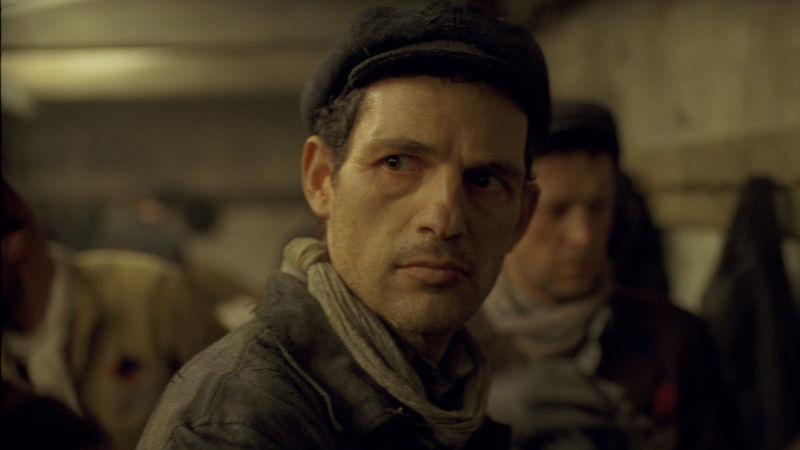The camera stays tight on a gaunt, weathered face as we hear a train and the dull roar of exhausted travelers disembarking at the outset of Son of Saul. The screen is narrow — almost square — so there’s very little space in the image around his head. As a result, we hear but don’t see a band playing as the train’s passengers are herded into a building, then to a large room with benches and wall pegs.
The camera stays tight on this man who’s ushering people silently. A red “X” painted on the back of his jacket marks him as a Sonderkommando, a prisoner who’s being forced to work with the guards. He’s different from the other prisoners, but the rest are out of focus anyway, stripping off all their clothes as an off-screen voice tells them, “You’re exactly the kind of people we need in our workshops. After the shower and hot soup, come directly to me. Remember your hook number.”
Then the door clanks shut behind them, and the gaunt man with the “X” on his jacket starts pulling the clothing off all those hooks people were urged to remember.
And after a bit, the screaming starts.
First-time Hungarian director László Nemes has been telling interviewers that he’d wanted Son of Saul to be an immersive experience, and it definitely is that. What he’s immersing you in is Auschwitz-Birkenau, the Nazi concentration camp, so it’s not an easy sit, but it is a riveting, effective one, and a genuine change from the familiar conventions of most holocaust dramas.


